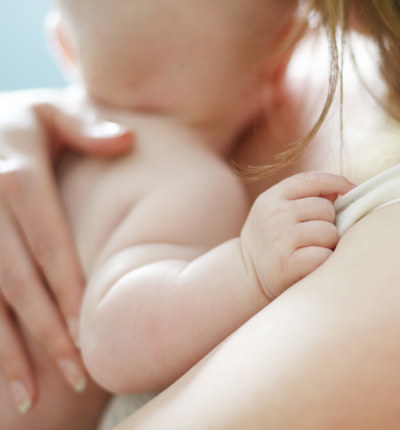
Is it ok that we don't talk about the chance of suffering a perineal tear in labour?
Health care lawyer Despina Kavadas looks at the stories behind perineal tear statistics
Posted on 18 June 2020
Yesterday marked the beginning of World Continence Week (WCW) a health campaign run by the International Continence Society to raise awareness of incontinence related issues.
Taking place this year between 17 – 23 June it aims to highlight the impact incontinence can have on our life and encourages those living with it to seek help so they no longer have to suffer in silence.
So many women are left in with a perineal tear following a vaginal birth and yet there is very little awareness amongst women of the risk of tears and the fundamental changes they can cause to a person’s life.
I remember well that during my two pregnancies, nobody mentioned to me that there was a risk of sustaining a tear during a vaginal delivery, and when I specifically asked for a caesarean section, I was told of the risks of that type of delivery, but none of the risks of a vaginal delivery.
The perineum is the area between the anus and the vulva in the female and tear to this section is often caused as a result of vaginal childbirth, which strains the perineum. It is the most common form of obstetric injury.
Tears vary widely in severity. The majority are superficial and may require no treatment, but severe tears can cause significant bleeding, long-term pain or dysfunction.
According to the latest report on this issue from the Royal College of Obstetricians and Gynaecologists (RCOG) published in October 2019 entitled: ‘Care of a third or fourth degree tear that occurred during childbirth’ some 3% of deliveries result in a third or fourth degree tear.
The figure is closer to 6% in first time mothers. The Office for National Statistics (ONS) calculates that there were 657,076 live births in England and Wales in 2018, so about 19,712 severe tears happen each year.
Given the incidence and the cost to society, let alone the emotional and physical injury to the mothers who have suffered these injuries, it is in the interests of the healthcare system, mothers and the public generally that awareness about the incidence and the consequences of third and fourth degree perineal tears is raised.
Perineal tear risk factors can include a long labour, a ventouse or forceps delivery or women who have been pushing for longer than recommended.
Taking place this year between 17 – 23 June it aims to highlight the impact incontinence can have on our life and encourages those living with it to seek help so they no longer have to suffer in silence.
So many women are left in with a perineal tear following a vaginal birth and yet there is very little awareness amongst women of the risk of tears and the fundamental changes they can cause to a person’s life.
I remember well that during my two pregnancies, nobody mentioned to me that there was a risk of sustaining a tear during a vaginal delivery, and when I specifically asked for a caesarean section, I was told of the risks of that type of delivery, but none of the risks of a vaginal delivery.
The perineum is the area between the anus and the vulva in the female and tear to this section is often caused as a result of vaginal childbirth, which strains the perineum. It is the most common form of obstetric injury.
Tears vary widely in severity. The majority are superficial and may require no treatment, but severe tears can cause significant bleeding, long-term pain or dysfunction.
According to the latest report on this issue from the Royal College of Obstetricians and Gynaecologists (RCOG) published in October 2019 entitled: ‘Care of a third or fourth degree tear that occurred during childbirth’ some 3% of deliveries result in a third or fourth degree tear.
The figure is closer to 6% in first time mothers. The Office for National Statistics (ONS) calculates that there were 657,076 live births in England and Wales in 2018, so about 19,712 severe tears happen each year.
Given the incidence and the cost to society, let alone the emotional and physical injury to the mothers who have suffered these injuries, it is in the interests of the healthcare system, mothers and the public generally that awareness about the incidence and the consequences of third and fourth degree perineal tears is raised.
Perineal tear risk factors can include a long labour, a ventouse or forceps delivery or women who have been pushing for longer than recommended.
Perineal tear case study
One of our clients, known as Mrs L, was in labour for over 18 hours, and spent nearly two hours pushing.
Medical staff attempted a ventouse delivery unsuccessfully, followed by a forceps delivery. During delivery she suffered a fourth-degree tear in which her internal and external anal sphincters were damaged
Mrs L suffered persistent symptoms of faecal incontinence and flatulence. She was diagnosed with post-traumatic stress disorder and suffered from panic attacks and flashbacks as a result of her injuries which had a devastating effect on her personal and professional life.
The legal claim we took on her behalf centred on the hospital trusts’ failure to perform an episiotomy at the time of the first pull of the forceps, failure to identify damage to and repair the internal anal sphincter, and failure by the consultant to attend Mrs L within a reasonable timeframe when the major obstetric haemorrhage alert was made.
The case was settled successfully but for Mrs L her injuries will affect her for the rest of her life.
Medical staff attempted a ventouse delivery unsuccessfully, followed by a forceps delivery. During delivery she suffered a fourth-degree tear in which her internal and external anal sphincters were damaged
Mrs L suffered persistent symptoms of faecal incontinence and flatulence. She was diagnosed with post-traumatic stress disorder and suffered from panic attacks and flashbacks as a result of her injuries which had a devastating effect on her personal and professional life.
The legal claim we took on her behalf centred on the hospital trusts’ failure to perform an episiotomy at the time of the first pull of the forceps, failure to identify damage to and repair the internal anal sphincter, and failure by the consultant to attend Mrs L within a reasonable timeframe when the major obstetric haemorrhage alert was made.
The case was settled successfully but for Mrs L her injuries will affect her for the rest of her life.
Perineal tears should no longer be a taboo. The consequences of a third and fourth degree perineal tear are far reaching. Mothers need to be armed with knowledge during their pregnancies so that they know what to expect, make an informed decision about how to proceed with their delivery and get the help and support they need should they suffer a perineal tear.
There needs to be greater support for mothers, increased public awareness and better education for medical professionals.
There are a number of support groups and charities, but in order for these to be effective the public needs to know they exist. The MASIC foundation is a charity which aims to help mothers with anal sphincter injuries following childbirth, and which campaigns to influence change in healthcare policies to avoid these injuries, improve their detection and where possible improve the rate of repairs after birth, so more women are spared the indignity of anal incontinence.
Other support groups include Birthrights, who are dedicated to protecting human rights in childbirth, Birth Tear Support who have their own closed Facebook page, and who offer support and signpost mothers to other groups such as the Birth Trauma Association.
There needs to be more education, information and communication so that we can eradicate the stigma associated with tears, we can prevent them occurring in the first place, and when they do occur, they can be identified quickly and accurately and the mothers signposted to the appropriate support networks.
This subject is too important to be ignored. The emotional and economic consequences of having these tears are immense.
Related blogs
You are not alone - perineal tears and childbirth injuries by Lauren Tully


